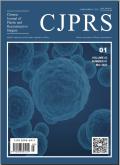Reconstruction of chronic nerve injuries using artificial nerve conduits: A case series
Chinese Journal of Plastic and Reconstructive Surgery
Pub Date : 2025-09-01
DOI:10.1016/j.cjprs.2025.04.002
引用次数: 0
Abstract
Traumatic peripheral nerve injuries are a major contributor to long-term disability, accounting for nearly half of all peripheral nervous system disorders. Although autologous nerve grafting remains the clinical gold standard, it is limited by donor-site morbidity and often fails to achieve full functional recovery. Biodegradable collagen conduits have emerged as an appealing alternative, providing a scaffold for directed axonal growth without requiring graft harvest. We reported three cases of chronic nerve injuries (6–12 months post-trauma): two involving 2.0–3.5 cm ulnar nerve defects in the forearm and one with a 2.5 cm median nerve defect at the wrist. Under microscopic guidance, each defect was bridged with a tubular type I collagen conduit secured by epineurial sutures, followed by standardized physiotherapy and sensory reeducation. At 12–18 months of follow-up, all patients demonstrated near-complete sensory recovery—two-point discrimination and Semmes-Weinstein thresholds returned to ≤6 mm—and motor function improved to Medical Research Council grades 4–5, restoring fine dexterity and grip strength. Patient-reported measures indicated marked reductions in neuropathic pain and paresthesia. No conduit-related adverse events or neuroma formation were observed. This case series highlights the potential of collagen-based conduits to promote robust axonal regeneration and functional restoration even in delayed presentations. By eliminating donor-site morbidity and simplifying the reconstructive procedure, conduit-assisted repair offers a less invasive, reproducible alternative to autologous grafts for both acute and chronic peripheral nerve injuries.
应用人工神经导管重建慢性神经损伤:一个病例系列
外伤性周围神经损伤是造成长期残疾的主要原因,占所有周围神经系统疾病的近一半。虽然自体神经移植仍然是临床的金标准,但它受到供体部位发病率的限制,往往无法实现完全的功能恢复。可生物降解的胶原蛋白导管已经成为一种有吸引力的替代方案,它为定向轴突生长提供了一个支架,而不需要移植。我们报告了3例慢性神经损伤(创伤后6-12个月):2例涉及前臂2.0-3.5 cm尺神经缺损,1例涉及手腕2.5 cm正中神经缺损。在显微镜指导下,每个缺陷用管状I型胶原蛋白导管桥接,并通过神经外缝合线固定,随后进行标准化物理治疗和感觉再教育。在12-18个月的随访中,所有患者表现出几乎完全的感觉恢复- 2点辨别和Semmes-Weinstein阈值恢复到≤6 mm -运动功能改善到医学研究委员会4-5级,恢复了良好的灵活性和握力。患者报告的测量结果显示神经性疼痛和感觉异常明显减少。未观察到导管相关不良事件或神经瘤形成。本病例系列强调了胶原基导管在促进轴突再生和功能恢复方面的潜力,即使在延迟表现中也是如此。通过消除供体部位的发病率和简化重建程序,导管辅助修复为急性和慢性周围神经损伤提供了一种比自体移植物侵入性更小、可复制的替代方法。
本文章由计算机程序翻译,如有差异,请以英文原文为准。
求助全文
约1分钟内获得全文
求助全文
来源期刊

Chinese Journal of Plastic and Reconstructive Surgery
Surgery, Otorhinolaryngology and Facial Plastic Surgery, Pathology and Medical Technology, Transplantation
CiteScore
0.40
自引率
0.00%
发文量
115
审稿时长
55 days
 求助内容:
求助内容: 应助结果提醒方式:
应助结果提醒方式:


